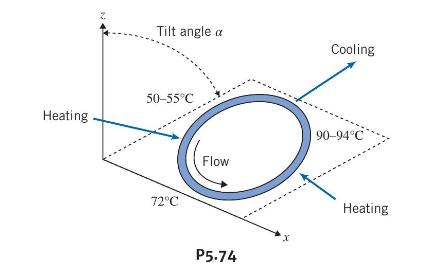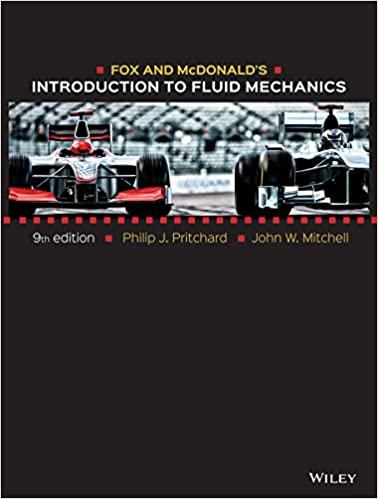The common thermal polymerase chain reaction (PCR) process requires the cycling of reagents through three distinct temperatures
Question:
The common thermal polymerase chain reaction (PCR) process requires the cycling of reagents through three distinct temperatures for denaturation \(\left(90-94^{\circ} \mathrm{C}\right)\), annealing \(\left(50-55^{\circ} \mathrm{C}\right)\), and extension \(\left(72^{\circ} \mathrm{C}\right)\). In continuous-flow PCR reactors, the temperatures of the three thermal zones are maintained as fixed while the reagents are cycled continuously through these zones. These temperature variations induce significant variations in the fluid density, which under appropriate conditions can be used to generate fluid motion. The figure depicts a thermosiphon-based PCR device. The closed loop is filled with PCR reagents. The plan of the loop is inclined at an angle \(\alpha\) with respect to the vertical. The loop is surrounded by three heaters and coolers that maintain different temperatures.

(a) Explain why the fluid automatically circulates in the closed loop in the counterclockwise direction.
(b) What is the effect of the angle \(\alpha\) on the fluid velocity?
Step by Step Answer:

Fox And McDonald's Introduction To Fluid Mechanics
ISBN: 9781118912652
9th Edition
Authors: Philip J. Pritchard, John W. Mitchell





